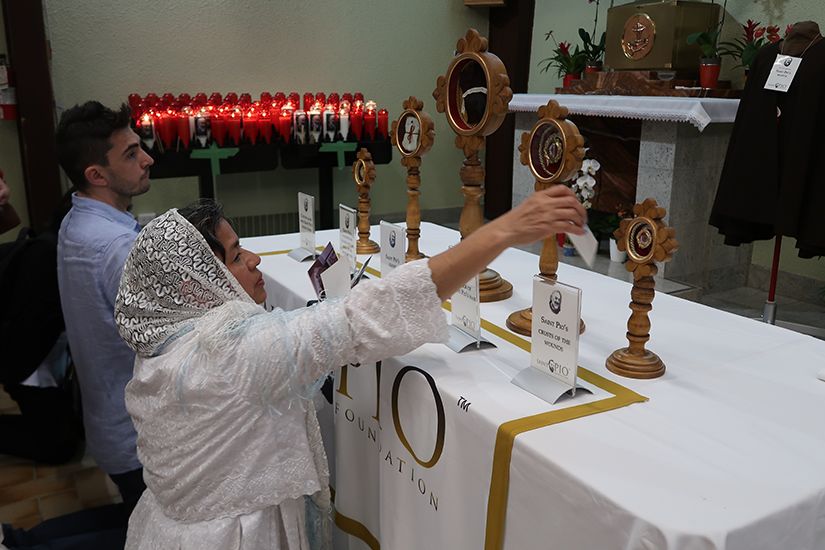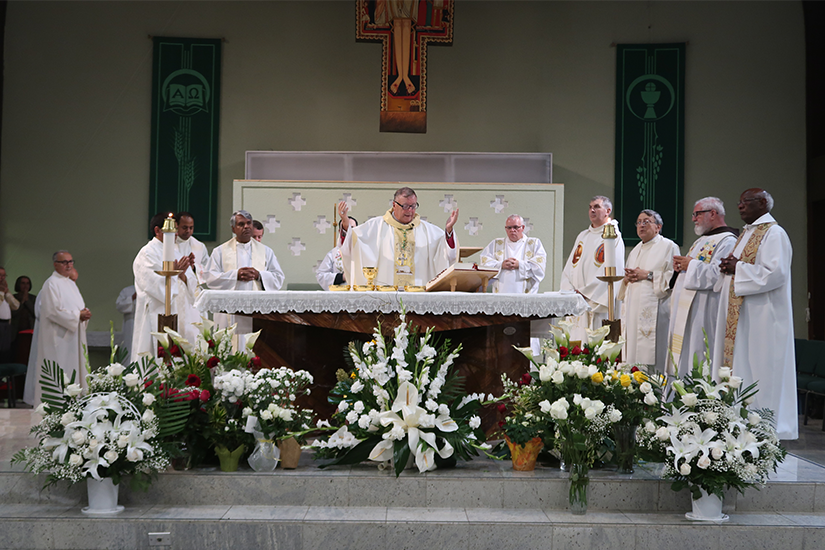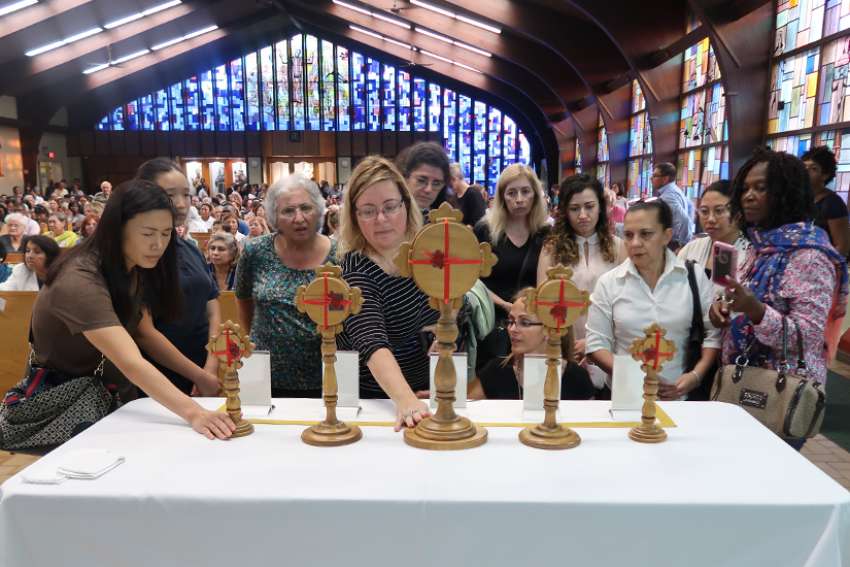Mousseau was struggling with his studies and he was beginning to think that the priesthood was not for him. He heard that a Capuchin Friar priest named Padre Pio could read people’s hearts, so he took a train from Venice to San Giovanni Rotondo to see him.
“My Italian was not so good, but what touched me was when he celebrated the Eucharist,” Mousseau said. “As I watched him celebrate Mass, I noticed that when he raised the host and raised the chalice, his hands would become white like wool, as if there was no blood in his hands at all. For me, that meant at that time, his whole person, his whole body was united with the body and blood of Christ.”
That was all the inspiration Mousseau needed to continue with his priestly formation and two years later, he was ordained into the Order of Friars Minor Capuchin in 1970. He now serves as a vocations director for the Capuchin Friars of Central Canada, based in London, Ont.
Mousseau joined his brother Franciscans on Sept. 18-19 at St. Philip Neri Church in Toronto to celebrate the 50th death anniversary of their brother friar, St. Padre Pio (Sept. 23). Thousands flocked to see the saint’s lock of hair, glove, blood and sweat-stained cloths, mantel and even the crusts of his stigmata wounds.
It was the first time these relics visited Canada, brought by the Saint Pio Foundation in the United States.
Other Pio relics are permanently located in the Archdiocese of Toronto, including one with the Capuchin Friars and one with St. Padre Pio Parish in Kleinburg, Ont.
“Padre Pio has touched so many people and they come from all different nationalities,” said Mousseau. “Everybody seems to have a story about Padre Pio. He seems to attract people, especially people who are in need of prayer.”
Even as the relics were being put away at the end of the day, people began to line up by the altar asking the friar priests for their blessing. The Franciscan habit that connects Padre Pio with today’s Capuchin Friars is still a powerful symbol which they must accept humbly, said Friar Fr. Joseph Lourdusamy.
“Pio is part of the Capuchin family, so it was kind of like bringing back our brother to our parish,” said Lourdusamy, who is pastor at St. Philip Neri Parish.

 Bishop John A. Boissonneau celebrates Mass at the end St. Padre Pio's relic display. To his right is St. Philip Neri Church pastor, Fr. Lourdusamy. (Photos by Jean Ko Din)
Bishop John A. Boissonneau celebrates Mass at the end St. Padre Pio's relic display. To his right is St. Philip Neri Church pastor, Fr. Lourdusamy. (Photos by Jean Ko Din)
Franciscan friars were available for confessions from 9 a.m. to 7 p.m. on both days. Lourdusamy said that hearing confessions for 10 hours was another way he and his brother friars felt connected to their brother saint.
St. Padre Pio was known to hear confessions for 15-19 hours a day in his younger years. Many would travel from around the world just to have him hear their confessions. Because he was known to have the ability to read people’s hearts and souls, there are many stories of the friar priest being able to recite a confessor’s deepest sins to them even before they spoke.
Many also sought him out for healings. There are stories of people walking into the confessional with physical deformities and chronic illnesses, then walking away completely healthy.
St. Padre Pio bore the pain of his stigmata for 50 years until the end of his life. Blood, marks and pain would be seen in places that corresponded to the five crucifixion wounds of Christ.
St. Padre Pio was also known to have the ability to bilocate, or be seen in two places at once.


